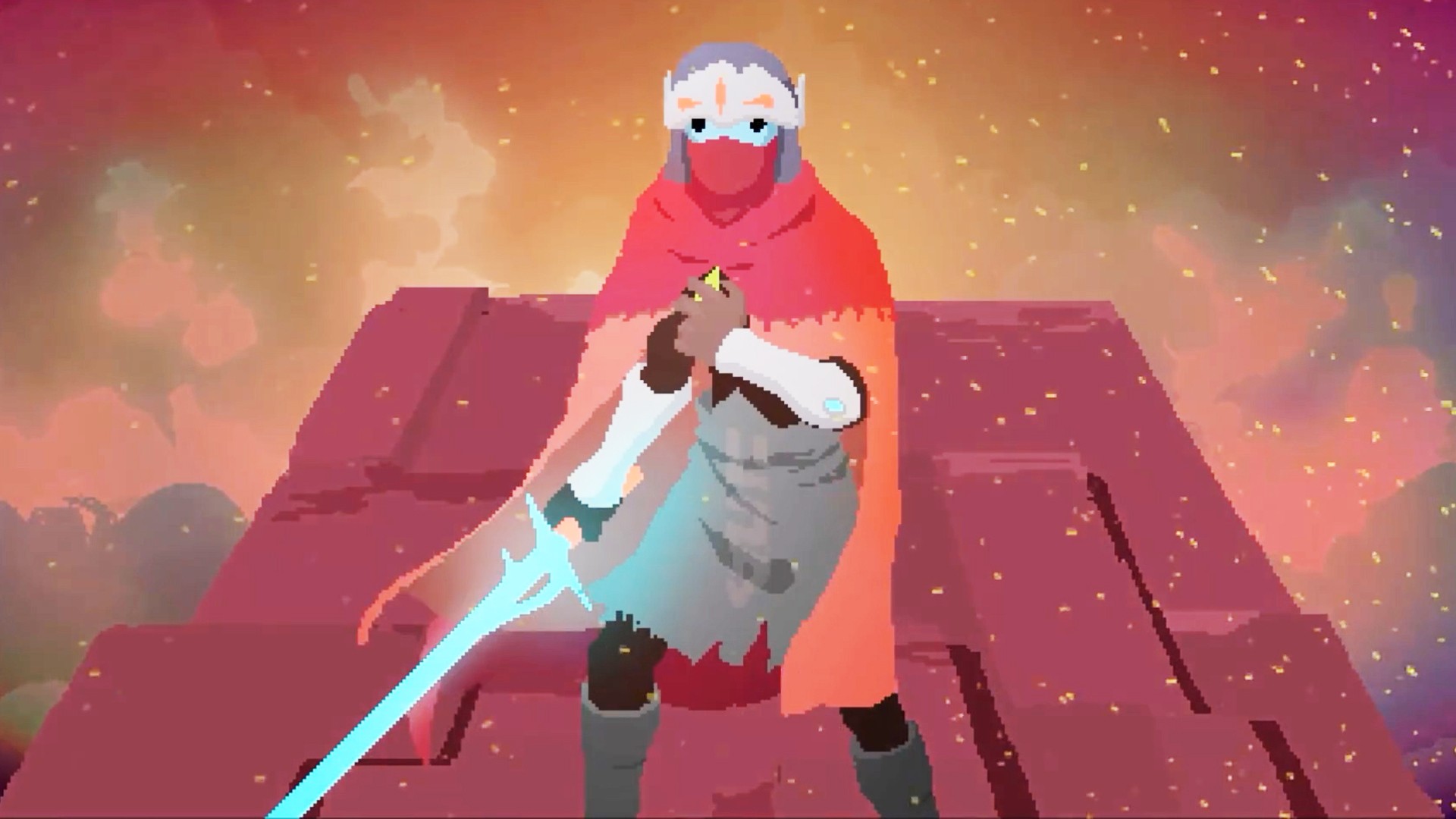10. Hitman
9. Dark Souls 3
Screenshot by author
8. Diaries of a Spaceport Janitor
7. Titanfall 2
Image courtesy of Respawn Entertainment
The firstTitanfall already delivered on that once, so to some degree, I expected that the sequel would hit me more softly. It did not.While I never committed to its (totally solid) multiplayer as deeply as I did the first, Titanfall 2's single player campaign was a (wall-)running masterclass on first person shooter level design.My favorite type of joke is one that I start laughing at a second or two before the punchline hits. Titanfall 2's levels are filled with this: high towers filled with fan blades and fire; a ship too far to reach, unless, of course…; a room, then a house, then a neighborhood slowly constructing itself, bit by bit, until you realize it is an arena special built to fight in. And then, like a good comic, Titanfall 2 shows restraint. It delivers its punchlines and moves on instead of stretching the bit further than it could. (My favorite joke of this type this year, by the way, is the ankle holster scene in The Nice Guys. The best version I've ever seen, maybe, is Norm MacDonald's moth joke.).Understand this: As a #teen, my favorite episode of anything ever was Mobile Suit Gundam: 08th MS Team #10, "The Shuddering Mountain (Part 1)". Unlike the rest of the Gundam oeuvre, 08th MS Team was grounded—jungle combat, urban warfare. Just a team of buds and a lot of shitty situations. "The Shuddering Mountain (Part 1)" was that in concentrate: Just robots and buildings and time.
6. Mafia 3
5. Stellaris
4. No Man's Sky
Screenshot by author
3. Quadrilateral Cowboy
Screenshot courtesy of Blendo Games
2. Hyper Light Drifter

Yeah, I typed "hyperlight" instead of "hyper light." blame Kanye's "Ultralight Beam." Also, it's Dali's Athens is burning, not Dada's. C'mon past Austin, get your game right.
1. The Sprawl
Illustration courtesy of Hamish Cameron
Here's the classic example: In most tabletop games, you roll to unlock a door, and if you fail, the door stays locked. In PBtA games, maybe you succeed and get in, or… you roll somewhere in the middle range, and you still get in, but leave an obvious mark that you were the one who busted the door open. Or maybe you fail all together—but that doesn't mean that the door is locked forever, it means that the GM gets to make your life more complicated. Maybe you get in, but you make a lot of noise and draw the attention of a nearby guard.What lifted The Sprawl up for me (besides the way I was able to add giant mechs to it really easily), is the expansion of a "clocks" system that started in Apocalypse World, and fuck, I like clocks a lot. (People who listen to Friends at the Table are laughing or shouting at this article right now. Huh.)Here's how clocks work: As a GM, you give a lot of the elements of your world—that amoral mega corporation, this duo of assassins, an ancient mechanical embodiment of capitalism—"clocks" that count down as the players do things (or fail to do things) in the world. It makes everything feel responsive and a lot more dangerous.For instance, when my players broke into a Liberty and Discovery Automaticorps' facility to rescue a friend of theirs, L&D's clock advanced, which meant that they began to spy on the group. Later, when my players failed a relevant roll, I advanced the L&D clock again, and the drone company deployed their ace pilot, Territory Jazz, to attack them when they were most vulnerable.And here's the thing: Corporations in the cyberpunk world of The Sprawl are too big to face head on. If you max out a clock, well, they're coming for you. And no matter how ready you are, you will be hurt in a meaningful way.The Sprawl made me think endlessly of this speech by Ursula K. Le Guin, in which she says:Corporations in the cyberpunk world of The Sprawl are too big to face head on.
The Sprawl gave me a tool to attempt to live up to those words. It brought my friends and I closer together, it let us, imagine new worlds. It let us answer the question what sort of world we would like to live in. Again and again it let me pose difficult challenges to my players and ask the familiar, but hefty question: "What do you do?"So? What do you do?I think hard times are coming when we will be wanting the voices who can see alternatives to how we live now. And who can see through our fear stricken society and its obsessive technologies, to other ways of being. And can even imagine some real grounds of hope. We will need writers who can remember freedom. Poets, visionaries. The realists of a larger realities. … We live in capitalism. It's power seems inescapable. So did the divine right of kings. Any human power can be resisted and changed by human beings. Resistance and change often begin in art, and very often in our art—the art of words.
